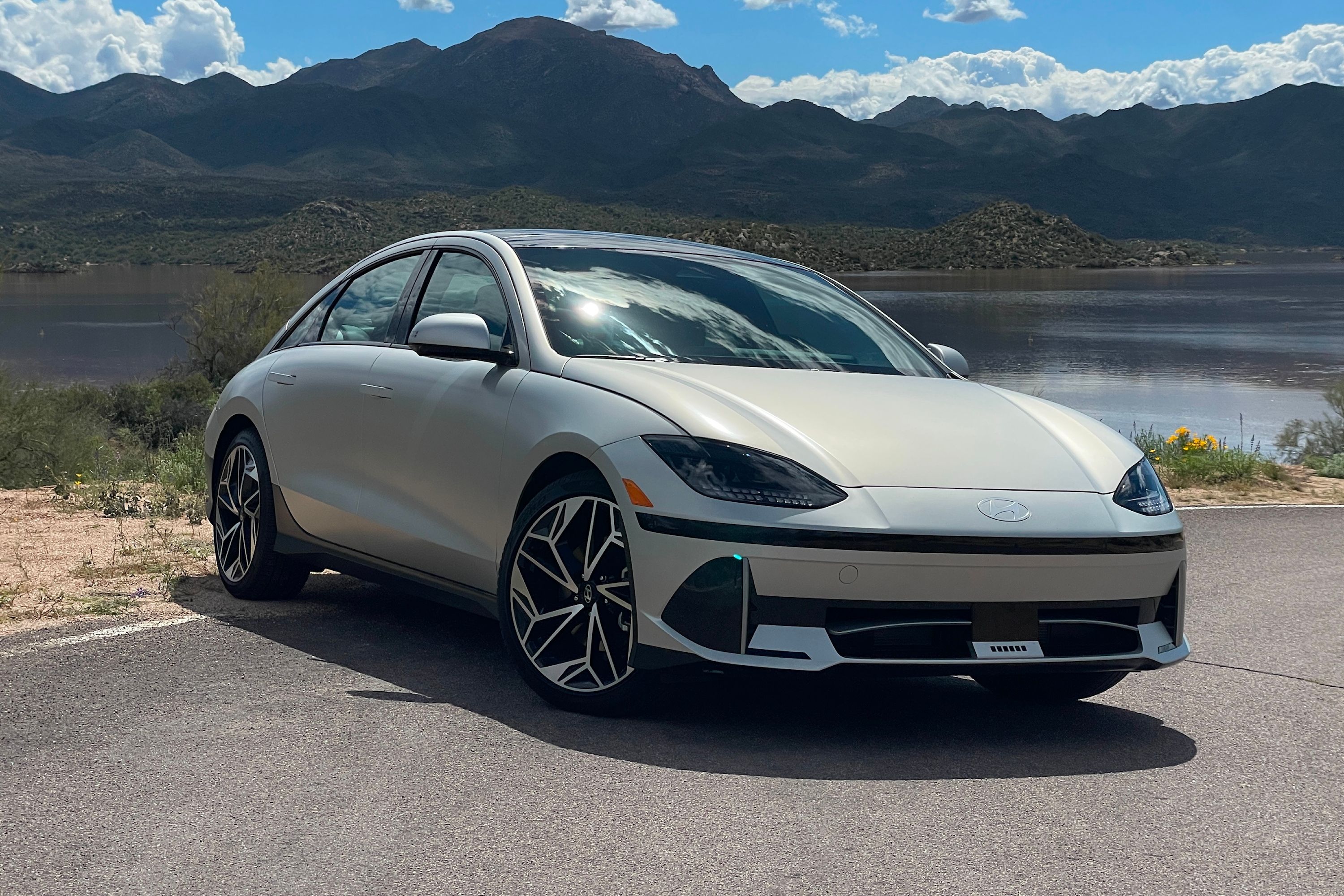
In transitioning from the striking Prophecy concept to the production-spec Hyundai Ioniq 6, Hyundai's svelte EV sedan ditched its dual joysticks instead of a traditional steering wheel. But a new patent unearthed by CarBuzz and filed with the United States Patent and Trademark Office (USPTO) explains this system's operation in detail, suggesting it may become a reality sooner rather than later.
Steering wheels take up plenty of space, so Hyundai proposes a dual-joystick driver interface for these conditions instead, with one mounted on either side of the driver.
Unlike the controls found in an airplane, for example, Hyundai's invention can only pivot in one direction, either left or right. They are also not showcased as single shafts, but rather handle-like controls hinged into the armrests.
The shafts are linked to force feedback actuators to provide counter-pressure to the driver's hands in an imitation of steering feedback. Armrest pressure sensors, steering rack actuators, and a processor unit form the rest of the steering hardware, with the latter being crucial to the operation of the setup.
That's because, using the feedback actuators, the system will attempt to synchronize the movements between left- and right joysticks, to minimize driver confusion. If the two joystick angles differ too widely, the controller will consider the pressure on the armrest sensors to determine which joystick's position should take priority in its calculation of the desired steering angle. In this scenario, the force-feedback actuator will counteract the errant joystick movement as a means of alerting the driver to erroneous input.
The actual steering angle in this drive-by-wire system is determined by first checking if the joystick movement conforms to normal steering conditions and then calculating viable steering angles based on the vehicle's speed and surroundings.
By comparing the two joystick inputs, the system will calculate a target steering angle, and apply the appropriate force to the steering rack to obtain this target steering angle at the front wheels.
The system will also compensate for the driver's body moving while cornering because this could affect the steering inputs. To this end, the system will measure how heavily the driver leans on the armrests and feed this info into its algorithm, to counteract the possibility of the driver's body movement causing incorrect direction inputs on the joysticks.
It's unlikely this will be found on a production car anytime soon, not least of all because of its alien design, but also because legislation won't allow for steer-by-wire systems without mechanical failsafe. However, such a system could have merit as a human control element in something like a Level 3 or 4 Autonomous vehicle that still makes provision for some human input and has an array of additional sensors to ensure the car isn't yanked into a tree.
This isn't the first time we've encountered OEMs trying to reinvent the way we control cars. Ferrari previously patented a single seat-mounted joystick similar to one you might use for gaming, while BMW envisioned replacing the steering wheel with a twin-joystick yoke.
The concept of steer-by-wire is also familiar, although some OEMs have struggled with getting this tech to respond in a natural fashion. Most recently, Lexus delayed the launch of its unique steer-by-wire yoke in the RZ as it refines the tech further. We can only imagine Hyundai's version will be infinitely more difficult to program correctly.
